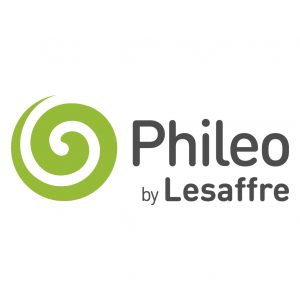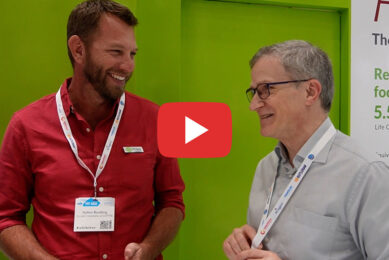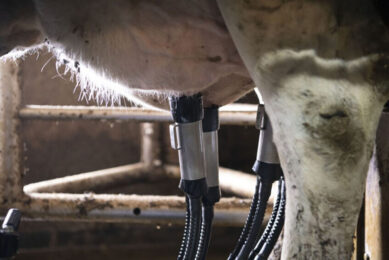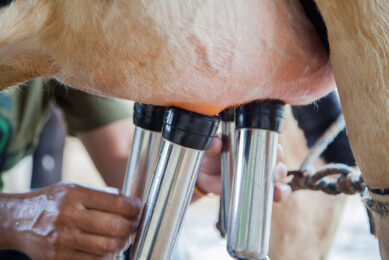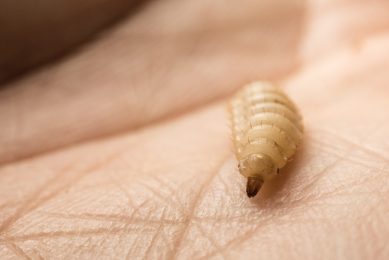Postbiotic to reduce Salmonella in chicken
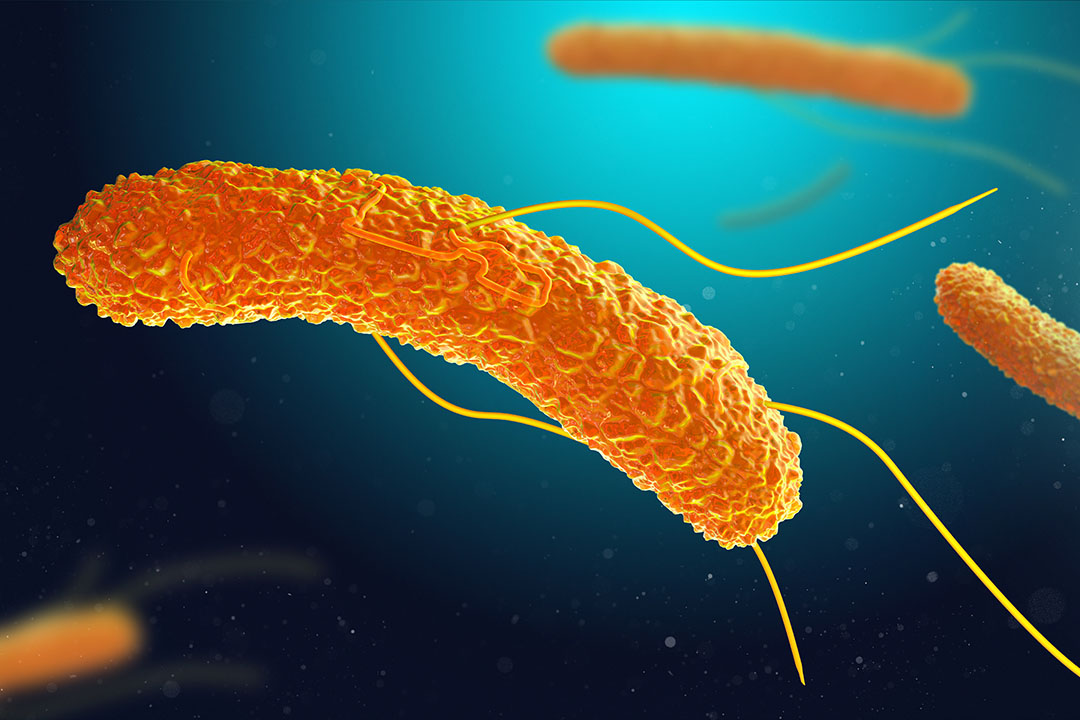
The farm is a complex environment and to successfully reduce Salmonella at the production level it is critical to attack all stages of production; breeders, hatchery, biosecurity, water quality, farm management, feed mill management, feed additives and more. Trials were conducted in broilers and layers to demonstrate the impact of yeast fractions on reducing Salmonella.
Salmonella is a gram-negative rod-shaped pathogen responsible for approximately 1 million foodborne illnesses per year in the United States and 91,000 in Europe. Salmonella contamination is a global issue in poultry production. Interventions are applied in the processing plant to reduce the level of contamination of poultry products.
The types of interventions that are permitted and implemented vary greatly based on the country of production and product class. In all aspects of poultry production, it is essential to reduce the level of Salmonella that enters the processing plant from the farm. The lower the pathogen load that enters the processing plant the easier it is to provide a safe and wholesome product to the market. As described below, a series of trials were conducted in broilers and layers to demonstrate the impact of Safmannan on Salmonella. Safmannan has been shown to reliably reduce the prevalence or enumeration of Salmonella in chickens making it a viable part of a program for reducing the risk of Salmonella contamination.
Trial 1: Salmonella Heidelberg – Broilers
This study was conducted to evaluate the effectiveness of different levels of Safmannan selected yeast fraction or a commercial yeast culture in reducing the direct colonisation and horizontal transmission of Salmonella Heidelberg in broiler chickens. At day of hatch, 2,000 broiler chicks were randomly assigned into 5 treatment groups with 8 replicate pens per treatment. Birds were challenged with nalidixic acid-resistant S. Heidelberg either by direct inoculation of 107 cfu orally or by horizontal transmission through inoculated penmates.
Safmannan at 500 ppm decreased Salmonella prevalence in the total infected birds (seeders and contacts) to 41.7% as compared to 54.2% in the untreated birds. The effect of Safmannan in reducing prevalence of positive birds was even greater when only the contact birds were considered; 32.5% in contact birds treated with 500 ppm as compared to 57.5% in the untreated group (P=0.09). Furthermore, enumeration of S. Heidelberg colonisation level in the cecum using the most probable number (MPN) method showed that Safmannan at 500 ppm reduced the bacterial load in the cecum of positive birds to 1.7 MPN/g as compared to 2.7 MPN/g in the control group, see Figure 1.
The reduction was statistically significant (P=0.04) in the contact birds. The same effect was not seen in the yeast culture treatment. The contact birds are more representative of the way birds are exposed to Salmonella in the field, it is rare that a chicken will encounter 107 cfu of a single organism in one moment. It is much more likely that a bird will encounter a pathogen mixed with a milieu of other organisms in the environment.
Figure 1 – Box plots for Salmonella MPN for culture-positive samples by treatment.

Trial 2: Salmonella Enteritidis – Layers
Ceacal prevalence of birds challenged with Salmonella Enteritidis (SE) showed a significant reduction in positive ceca in treatment compared to the control. This trial demonstrated the effects of Safmannan on Salmonella Enteritidis in egg producing hens. A total of 24 Hy-Line W36 layers were challenged with Salmonella Enteritidis, 12 birds were fed a basal diet only (control) and 12 birds were fed the basal diet plus treatment of 500 ppm Safmannan.
At one-week post challenge, all birds were humanely euthanised and ceacal prevalence and enumeration of SE were recorded. Ceacal prevalence of SE was 70.7% lower (p<0.089 value) in the treatment birds compared to the control. a significant reduction of salmonella positive hens is a biologically important result indicating safmannan has the ability to impact levels of>S. Enteritidis in the ceca and consequently the environmental load.
Trial 3: Salmonella Typhimurium – Layers
A total of 24 Hy-Line W36 layers were challenged with Salmonella Typhimurium at USDA- ARS Southern Plains. The trial consisted of 12 birds being fed a basal diet only (control) and 12 birds fed the basal diet plus treatment of 500 ppm Safmannan. All of the birds were orally gavaged with 8.7×109 CFU nalidixic acid/ novobiocin-resistant Salmonella Typhimurium. At one-week post challenge, all birds were humanely euthanised and ceacal prevalence and enumeration were recorded. Ceacal counts on birds challenged with S. Typhimurium showed a final count of 4.71 log10 cfu/mL, while Safmannan treatment sample counts were 3.71 log10 cfu/mL (P=0.015). A 1 log reduction of ceacal Salmonella is a biologically important result indicating that Safmannan has the ability to impact levels of S. Typhimurium in the ceca of laying hens.
Trial 4: Natural Challenge – Broilers
This field trial demonstrated the ability of Safmannan to reduce the risk of Salmonella contamination in broiler ceca while maintaining performance.Two commercial broiler farms each containing four houses were selected from a poultry integrator in the southern United States. Two houses from each farm were designated as control and two houses as treatment. The control diet contained a yeast culture, a proprietary additive blend, a Bacillus probiotic, and butyric acid. The treatment diet replaced the yeast culture and additive blend with Safmannan. Twenty cecal samples per house were taken at random post evisceration at the processing plant, cold packed and submitted for prevalence and enumeration of Salmonella.
On farm 1, the Safmannan treatment houses had 0 Salmonella detected in the ceca compared to 10 positives in the control houses with an average count of 0.96 log cfu/g (p<0.05). farm 2 had no salmonella detected in the ceca, see>Figure 2. The Safmannan treatment significantly reduced Salmonella contamination while reducing the cost of the diets and maintaining performance.
Figure 2 – Average of 0.72 log reduction of Salmonella in the ceca.

Summary
Safmannan is a high-quality yeast fraction derived from Saccharomyces cerevisiae. The impacts of Safmannan on intestinal health and performance are well documented in scientific literature and by internal data. Safmannan has been shown to bind specific animal and human pathogens. Research trials point to pathogen binding as only a portion of the mode of action, there are well documented impacts of mannan and beta-glucan on intestinal integrity, the immune system, and influencing the microbiome. The body of work surrounding Safmannan supports the inclusion of Safmannan in diets for broilers and layers.
References available on request


